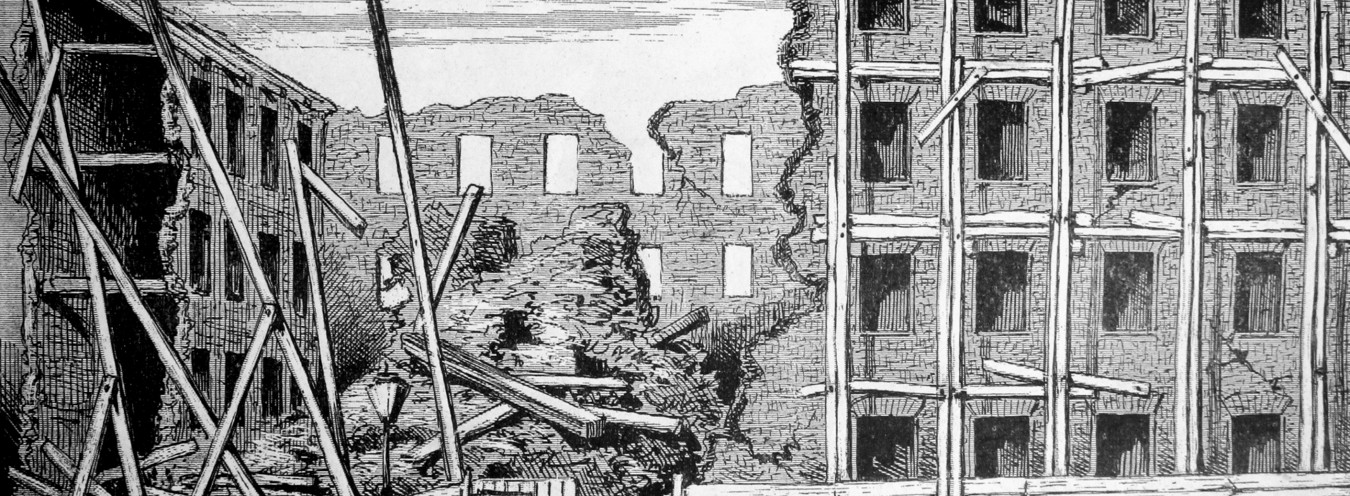
Warsaw Tenement Houses
The house had three floors; it had a few iron balconies and each floor was in a different style. […] The yard inside, surrounded by the three-storey wings, looked like the bottom of a deep well, full of smelly air. (172)
The Łęcki property, as depicted by Prus, is a large, brick residential house, located in a dense setting, adjacent to neighbouring buildings, with a plainly decorated façade and gate, large entrance, and an inner yard. It is a typical tenement house, one among the many that were being built in the 1870s in Warsaw, and it was divided into separate apartments for rent. At the time, the tendency was to build tall, several-storey buildings fast and economically from low quality materials, which frequently resulted in construction disasters, one of which is mentioned by Prus in The Doll (on the very day that the house in Wspólna Street collapsed). The writer also pays attention to the characteristic structure of many tenement houses in Warsaw. In order to use the available land in the most economical way, the owners started to build well-shaped houses, which consisted of the front section and of outbuildings, which were added to the sides and the back of the main building. The Łęcki house is planned in the same way, although the owners themselves obviously live elsewhere. This architectural building arrangement provided a closed yard with space for technical facilities, such as waste disposal or water installation. A janitor was responsible for cleanliness and order as well as for the closing and opening of the gate, whereas a manager carried out routine maintenance and collected rent. In The Doll, this function was performed by impoverished gentleman Mr Wirski. Plaques with the name of the street, number of the house, and name of the owner as well as a list of tenants were found on the apartment buildings.
The urban style of architecture was dense, closed, and economical. As a result, the life of the tenants was more limited, even crowded. As the buildings grew taller and taller, the well-shaped yards appeared, and they limited privacy to an even larger extent. The front windows overlooked the street and the facades and windows of the tenement houses across the street. Tenants in the apartments at the back could easily see through their neighbours’ windows. It was increasingly difficult to maintain peace and intimacy, more difficult to conceal something or keep a secret. It contributed to the atmosphere of suspicion, neighbourly observation, gossip, and innuendo. The Warsaw tenement house was bitterly criticised by Prus both in The Doll and in his journalistic writings. A few years before the novel was published, he wrote in Niwa magazine, One look suffices to imagine what conveniences are provided in a typical Warsaw tenement house. The building resembles a three- or four-storey box, with a tiny yard, sickly colouring, and sometimes with plaster ornaments that look like a patch on mended clothing. Cramped and illogical apartments, where the bedroom is dark, and the best room is called a parlour and is empty (Niwa 1874, vol. 6, nr 2).
→ Accommodation; → Rumour;
Bibliografia
- J. S. Majewski, Warszawa nieodbudowana. Metropolia belle epoque, Warsaw 2003.
- J. Kasprzycki, Korzenie miasta. Warszawskie pożegnania, Warsaw 2004.
- W. Koch, Style w architekturze, Warsaw 2005.



